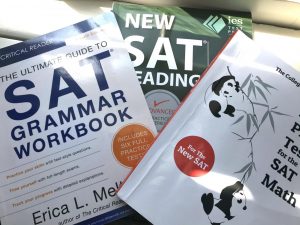Test Optional Movement amid Covid-19

With limited testing options for incoming applicants due to the COVID-19 pandemic, many schools have considered going test optional, or even announcing they will not consider standardized tests in their admissions process.
July 22, 2020
A record number of colleges are joining more than 1,100 others that have already dropped standardized test scores for entrance, according to the National Center for Fair and Open Testing. That is nearly half of 2,400 four-year colleges in the nation. Many colleges cited the COVID-19 pandemic and the cancellations of SAT/ACT spring testings as a catalyst and did not plan to adopt these policies permanently. However, history has shown that once a college goes test-optional, it tends to stick with the practice.
Prior to the pandemic, the trend has already picked up, leaning towards a broader access and holistic admission.
The appeal has double advantages for the colleges. Dropping the SAT/ACT requirement typically increases applications and decreases the acceptance rate. The average test scores reported to U.S. News, for example, would climb as the low scores are out of the tabulation.
With the University of California system voting on May 21 to phase out the SAT and ACT as an admission requirement over the next four years, this major shift will exemplify how going test-optional will impact students and colleges in the future.
Oren Iosepovici, Director of SHS Counseling Department stated, “These standardized tests are often the biggest cause of angst among our juniors. We appreciate that more and more schools are going that test-optional route, but we also recognize that students spend significant time, and in some cases significant money, to prepare for these exams. In some cases, our students do well in these tests, and those results can serve them well.”
College entrance exams have long been denounced for magnifying the discrepancies in America’s education system on income or race, and also for the opportunity for cheating. Further, “Standardized tests are quite expensive for some, while others can take multiple times. By going test-optional, schools are enabling families with lower incomes to be on a more equal playing field,” stated Rishabh Gharekhan ’20.
The test-optional policies aim to diversify an applicant pool, broadening access, and encouraging more applications from high-achieving students who have historically been underrepresented at selective colleges. This would include low-income or first-generation-to-college students, groups that haven’t traditionally scored as well on standardized tests as students who can afford to take practice tests or hire testing coaches to help them prepare.
“There are some who feel they present an important distinguishing factor among many similar applicants and others who believe they unfairly disadvantage those with limited resources. Given that….colleges’ mission is supporting students who may not have had the same opportunities as others, it is likely that standardized tests will continue to be seen as a barrier in encouraging a wide variety of applicants to consider specific schools..” explained by Mr. Iosepovici
“Colleges going test-optional will allow more students to show themselves in the admission process beyond a test score, and emphasize the character and individuality of students,” said SHS junior Phoebe Shearer ’21.
Students ought to view test-optional applications as giving them a choice on how they present themselves to a college, and many respond creatively with entrepreneurial proposals, non-profit volunteers, artwork, and other ideas. “Given that there are no standardized exams to evaluate, admissions officers are by nature forced to take an even closer look at other aspects of the student’s application…the transcript plays the most significant role in the evaluation, followed by other parts of the application, including the essay, letters of recommendation..,” furthered Mr. Iosepovici.
However, do the test-optional policies actually influence admission selectivity and diversity?
A study from October 2018 compared the data from the 127 colleges with test-optional policies from 2009-2014 to the 1,649 schools without. The findings are SAT optional policies have no effect on racial and socioeconomic diversity, no influence on the gender ratio of institutions, no effect on the quality of the student population. SAT optional policies briefly increase applications, but the effect is not sustained over time. Data also shows percentages of first-generation-to-college enrollees, underrepresented minorities, and women are most likely on the rise in some test-optional admissions, while some other colleges see less change of the makeup of their enrollment.
Whether colleges going test-optional will truly have an effect on diversity, in the long run, is still waiting to be seen. One thing is for certain: test-optional is no longer an outlier, and its impact will be long-lasting on the higher education admission system, big or small.
Test optional movements are changing fast. Below is the SAT/ACT tests and SAT subject tests requirements for 2020 to 2021 applicants, as of June 20, 2020:
SAT/ACT Optional/not required:
Cornell
Columbia
Dartmouth
Harvard:
UPenn:
CalTech: Moratorium two year SAT/ACT test-optional; Eliminated SAT Subjects requirement
UC Colleges
UVA:
University of Chicago
Yale: SAT not required; SAT Subjects not considered
Brown:
Princeton: recommends two SAT subject tests for Engineering
Stanford
Northwestern:
Georgetown
SAT/ACT Required:
MIT
University of Michigan
























